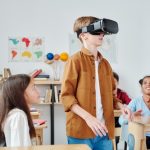
5 Ways Virtual Reality Enhances Learning
March 14, 2023
Not so long ago, Virtual Reality (VR) is something one can only see on the big screen — a concept made popular by sci-fi movies. These days, however, they are far from just being works of fiction. As technology continues to advance, the past few years have also seen VR becoming more mainstream.
Initially, VR was introduced as a powerful tool to enhance the experience of those involved in the gaming industry. Over time, however, as more people saw its potential, more industries have delved into exploring its many possibilities. Thanks to the “life-like” experiences that the technology offers, more industries have started to incorporate it into their respective processes.
The field of education is no exception. The emergence of smart VR schools in recent years showcases the many ways that VR technology can be incorporated into the learning setting. With the immersive experience it offers, VR is making learning more fun, involved, and interesting. Many institutions are even starting to recognize the many benefits VR can offer for students with disabilities. Read on as we will explore the many ways VR is making waves in education.
Practical and risk-free training
VR is known for its simulated environments. In the traditional classroom setup, students are often taught various concepts and theories, followed by practical activities to allow students to apply what they have just learned. Unfortunately, there are limitations to this in the usual school setting, particularly in the available resources to execute such training. As such, students are only likely to practice what they’ve learned a few times considering the constraints involved.

With VR however, it is more than possible for students to practice what they’ve learned in a virtual simulation as many times as they need to. VR simulations also provide students with a safe and secure setting where they can practice any unfamiliar skills without having to worry about getting injured or causing injury to others. It’s no surprise how the technology is utilized by certain industries as a useful tool for hazardous work training. This risk-free environment in a VR simulation allows students to polish their skills because they can afford to make mistakes and ultimately, learn from them.
Remote learning and accessibility
Thanks to the internet, the world these days is becoming a much smaller place. Connecting with people from across the world is more than possible. VR technology only enhances that. Through internet connectivity, VR makes it possible for students to learn no matter where they are. Students can even learn right from their homes and still experience the full classroom treatment through virtual reality. As such, VR is becoming a fantastic tool for homeschooling.
VR also promotes accessibility for learning. It doesn’t matter where you are in the world, the simulation offered by the VR technology remains the same wherever you are accessing it from. When barriers like distance are broken down, there is no stopping anybody who wants to learn. With this, VR can be used as a tool to equalize opportunities for education and learning. With its current trajectory, the technology is on the right track to transform education and introduce a less conventional approach to teaching.
Medical training and simulations
Another area that is greatly benefitting from the use of VR in education is medical training. Many hospitals and medical colleges are putting more effort into investing in VR technology for medical programs and incorporating it into their learning processes. Medical students need to hone their skills in how to handle a variety of scenarios from simple surgeries to complex operations. The immersive and interactive world of VR is the perfect platform to ensure that this is exactly what they are getting.
In traditional training settings, students cannot afford to make errors, especially when a patient’s life is on the line. With a VR simulation, however, students are free to explore every single possibility out of every scenario. They can afford to make mistakes along the way. By being able to perfect their skills through trial and error, medical students will feel more confident that by the time they graduate, they are equipped with critical practical skills to make a difference once they start interacting with real-life patients.

Virtual field trips
Perhaps one of the most popular applications of VR in the education sector, virtual tours, and field trips make it possible for learners to go to places that would otherwise be physically impossible for them. Field trips are crucial in the learning process as they reinforce what students have learned in the classroom. However, the recent pandemic has made educators realize how it is not always possible to facilitate in-person tours and trips for students.
When students are unable to step out of their homes or classrooms, VR can be used as an alternative learning tool instead. With just a VR headset, students can travel to places all over the world and even experience and immerse themselves in the cultures and traditions of these places — all without having the need to go anywhere. From doing a virtual tour of the Louvre, climbing up the Eiffel Tower, exploring the Sahara desert, or even taking a trip to space, nothing is virtually impossible with VR.
Inclusivity for students with disabilities and special needs
Students with special needs and learning disabilities will never be able to learn the conventional way. The usual medium of instruction and the use of textbooks and worksheets are never going to be as effective for them as they would be for regular students. The use of VR in special education, however, is a different story.
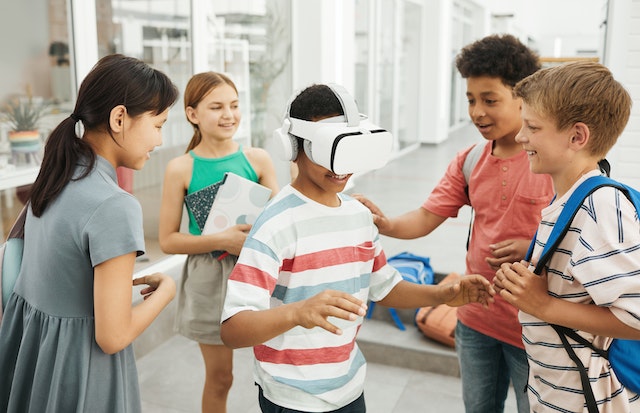
With VR, it is possible to work past a student’s disability and allow them to discover the joys of learning. Special needs students always learn at a different pace from their classmates in a traditional classroom setting. However, with VR technology, their learning deficiencies no longer have to hamper their education. Teachers can utilize VR technology in creating simulations that are tailored-fit to a student’s specific capacity, interests, and learning needs. When students with disabilities no longer have to be pressured to keep up with the rest of the class, they will discover a new appreciation for learning that is not possible with the conventional way of teaching.
Technology harnessed right
The many strides that VR is making in various industries and most notably, in education, is further proof that when harnessed right, technology can be a force for good. While it is true that research to quantify the many benefits of the technology in this sector is still few and far between, it is also undeniable that it has the potential to transform education in the most positive ways possible. As technology continues to evolve and more advancements are introduced in the field, it is not surprising to see how the rest of the world has shifted its gaze to VR for the possibilities it can pave the way for.
In the past decade, virtual reality (VR) emerged as one powerful tool that educators can harness to allow students to experience a more immersive, engaging learning experience. Gone are the days when education means getting confined in a four-walled classroom, sitting down, and listening as a teacher discusses the lesson in front. Today, many schools are adapting the concept of VR education and are learning how much it is helping students grasp lessons better than the traditional approach.
VR’s benefits go beyond the traditional learning setup. Students who are being homeschooled have also discovered how much beneficial virtual reality is in their understanding and grasping of the many concepts they are learning. With how VR allows users to expand their perception of things that are typically not accessible or discernible, it is hardly surprising how much the technology has positively impacted learning at every level.
What is truly impressive about VR is how easily and effortlessly it can transport users to faraway worlds without really needing to move an inch. With VR, concepts are no longer just concepts. Students can easily see a visualization of these concepts while also getting an idea of how they are applied in the real world.
As such, learners get a well-rounded understanding of how things apply in real life. This is even more useful when studying concepts in STEM. The possibility of visualizing concepts and subjects not only paves the way for better understanding but makes learning so much more interesting as well. Below are some of the ways virtual reality learning has transformed homeschooling.
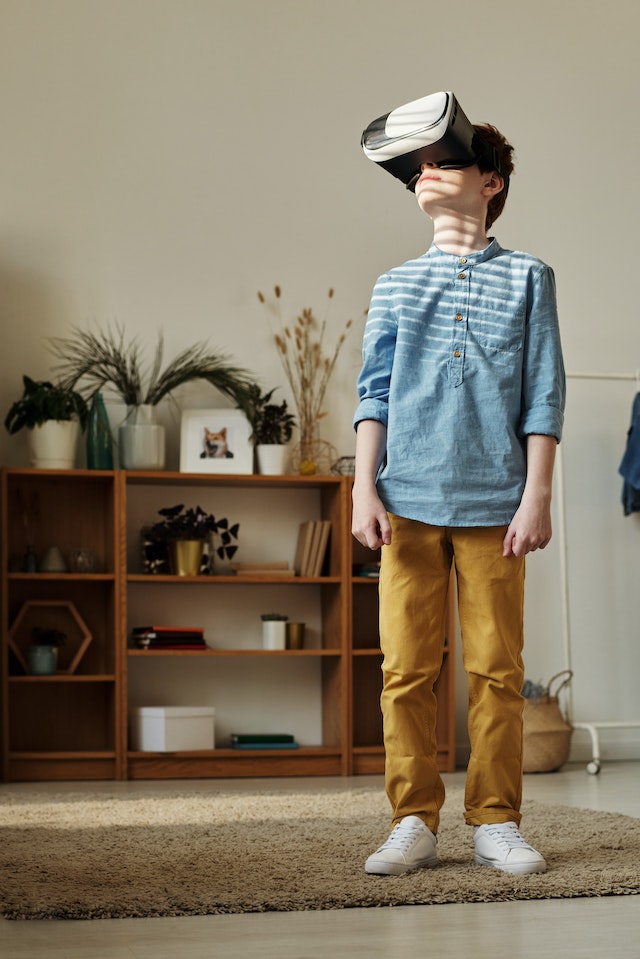
Virtual reality makes it possible for students to experience things that are just not possible by just poring through their homeschooling materials. A VR headset is all that one needs to get transported to places, environments and settings that would otherwise be impossible for them to get to. Being able to visualize what you are trying to learn is more effective than just mere theoretical learning. As such, students become more engaged and immersed in the subject.
For instance, if you are interested in how things unfolded when settlers first came to the American shore, you can get transported to the day this happened and see things for yourself. More importantly, you don’t just get to visualize it, VR technology allows you to experience it.
However, parents do need to be more discerning about the things that their children are experiencing while getting homeschooled via VR technology. Making sure that the experiences are appropriate for their age level is essential. VR is highly immersive and ensuring that what your kids are learning is age-appropriate is critical in ensuring that the technology is utilized responsibly.
When it comes to learning, students prefer to watch something as opposed to just hearing it or reading it. Regardless of age, students tend to favor computer-based visualizations and animation. This is exactly what VR homeschooling offers. Instead of just throwing a book of concepts to the learners, they get to see, visualize, and experience the lesson instead. As such, it is easy to keep them interested throughout.
Since VR technology also allows for interaction, students don’t just get to learn faster, they get to retain what they have learned as well. With VR, things that they’re never going to experience in the real world become tangible. This improves their overall motivation, making them even more passionate about studying and learning more.
What VR offers is an immersive learning experience where students explore subjects, concepts and theories that traditional teaching methods are unable to. VR technology is known to incorporate gamification in its learning process. This is the addition of game design elements and mechanics are added to the learning process. Immersive and interactive, VR learning mimics virtual games, making the learning process fun.
Games often have a feedback and reward system that motivates players and keep them hooked. VR learning can use this system to provide learners with instant feedback as well as rewards for completing tasks, reaching milestones or achieving certain goals. Rewards can be unlocking new content or levels. It could also be in the form of virtual badges.
In addition, games are known for having engaging narratives that keep players hooked. The same can be applied to VR in homeschooling. The technology can be harnessed to use storytelling to keep learners captivated. For example, a history lesson on the American Revolution can be turned into a VR game, where the student plays the role of a colonial soldier and fights in key battles. These take learning to the next level and make the experience less of a requirement but something more fun that students can look forward to.
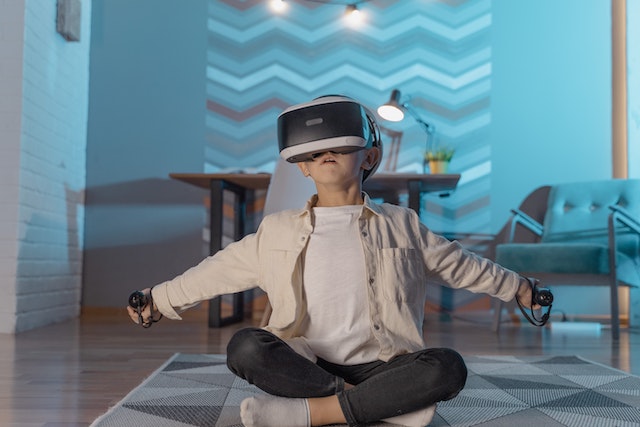
Traditionally, homeschooling has relied heavily on textbooks, online courses, and educational videos. However, these methods may not always provide a hands-on learning experience, which can be critical in helping students understand complex concepts.
With VR technology, students can experience simulations of real-world scenarios, which can help them understand concepts better and make learning more engaging and interactive. Students will be exposed to a more engaging learning approach compared to passive traditional ones.
For instance, students studying the human body can better explore the different systems, organs, and parts of the body. When learning about history, VR allows students to not only visit historical sites but to even check out museums or go on field trips to experience things first-hand — virtually, of course. Students can now experience historical events as they took place, making learning history more interesting and fun.
VR can engage multiple senses for a more holistic learning experience. This approach is based on the embodied cognition principle, which suggests physical experiences are better processed by the brain. In a VR learning setting, students won’t just see and hear experiences, but in some cases, touch what they are seeing and experiencing. This immersive experience can significantly enhance their understanding of the subject matter. The use of VR in learning is particularly beneficial for subjects that require hands-on experiences, such as science, engineering, and art.
The use of sound in VR is also a significant factor in providing a comprehensive learning experience. It can be used to enhance the immersive quality of the VR environment to make a more engaging experience. Recently, the use of touch is being introduced in VR technology and is looking quite promising. When harnessed right, VR developers can effectively create simulations incorporating a sense of touch to take learning immersion to the next level.
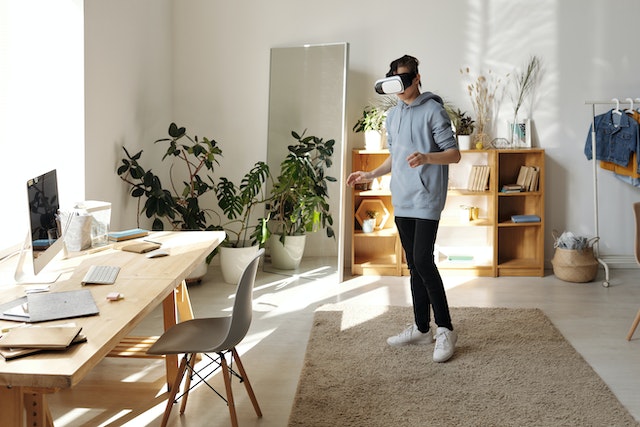
The pandemic has brought to the fore the many benefits of homeschooling. However, keeping learners interested in the lessons has remained a challenge, especially when they are learning on their own and not in a classroom with other similar-aged students. As homeschooling sometimes makes students feel isolated not just from other kids but also from the rest of the world, virtual reality learning opens new worlds of possibilities. With the engaging, immersive and more fun experience it offers, it is hardly surprising how more people are incorporating the technology into their homeschooling curriculum.